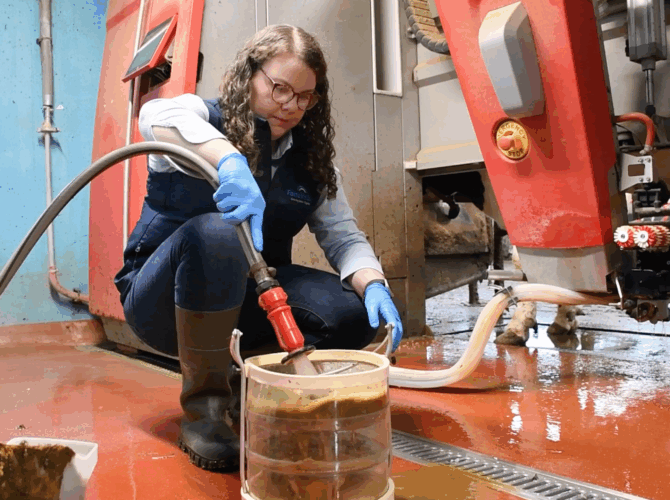Sift Happens: Measuring Dung for Digestive Clues
3rd October 2025

While ruminant nutrition is increasingly driven by lab analysis, software and predictive models sometimes show the best information can be gleaned from the floor of the shed.
Digestive clues of ruminant animals are ever present in the form of fresh dung. Typically using dung scoring, where dung is judged on its appearance and thickness, we can measure rumen function of the herd. The use of a manure sieve goes one step further to uncover important clues about fibre digestion, feed efficiency, and rumen health.
As a practical tool for evaluating fibre digestion on-farm, sieving manure measures the amount of undigested fibre being passed through the gut. Typically, it consists of three sieves stacked on top of each other, each with mesh ranging from 4mm in the top sieve and 1mm on the bottom sieve. Designed to retain larger undigested particles like long fibres on upper sieves and allows smaller particles and liquids to wash through. This mimics the rumen digestion processes to display what feed is being utilised.

How the method works?
Applications and Benefits
Manure sieving allows us to make informed adjustments to dairy and beef feeding systems, as it is a snapshot of digestion that can uncover potentially major issues we often see on farm;
Ration changes: If long fibres are consistently present, diet adjustments can be made from shortening forage crop lengths, to reviewing the diet and balancing the concentrates accordingly.
Rumen health monitoring: Sudden changes in manure composition can signal rumen upset, ruminal acidosis and potential major mycotoxin and endotoxin burdens. Additions to the diet can then be made to alleviate these issues, although other diagnostics must be considered in an instance like this.
Efficiency tracking: Comparing dung before and after feed changes helps gauge the impact on digestion. Below is an example where the overall crude protein of a diet was increased and rumen efficiency increased, shown by the lower percentage of larger sized material retained in the top sieve on the left, demonstrating better feed efficiently. In this case an increase milk production was the outcome witnessed, and more feed was utilised in the rumen, hence the increase of material found in the bottom sieve (seen on the right hand side sieve).
Before

After

Carrying out a dung sieve is a simple yet effective tool for monitoring feed digestion in ruminants. By helping identify feed inefficiencies and digestive issues early, it also supports better nutritional management.
To learn more about the performance of your whole ration or to carry out a dung sieve for your herd please contact your local feed advisor or phone 028 8224 3221.


